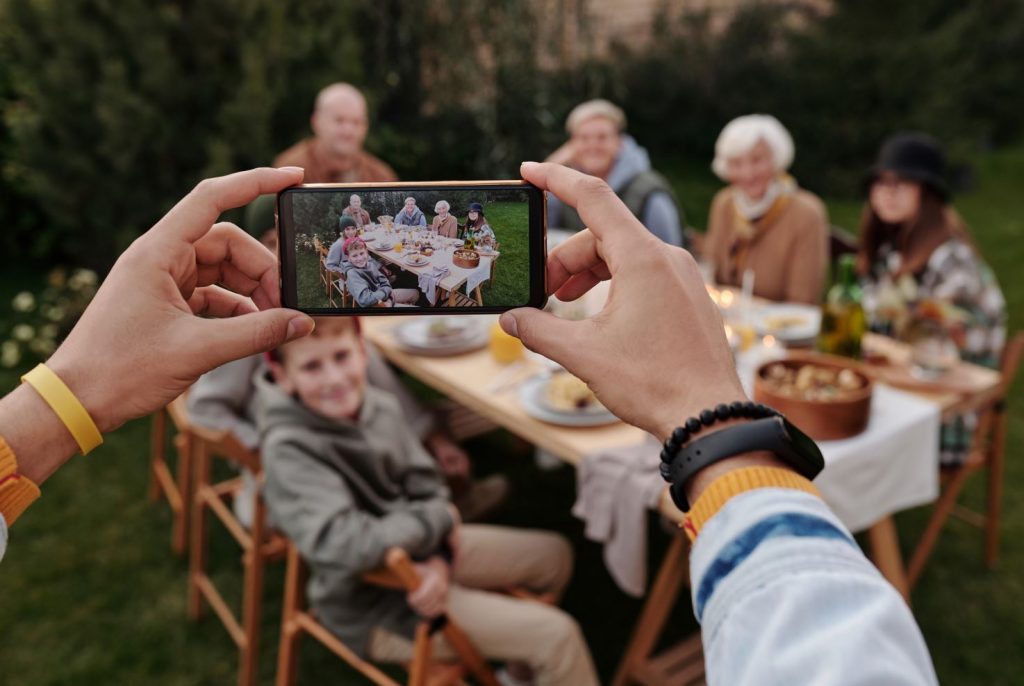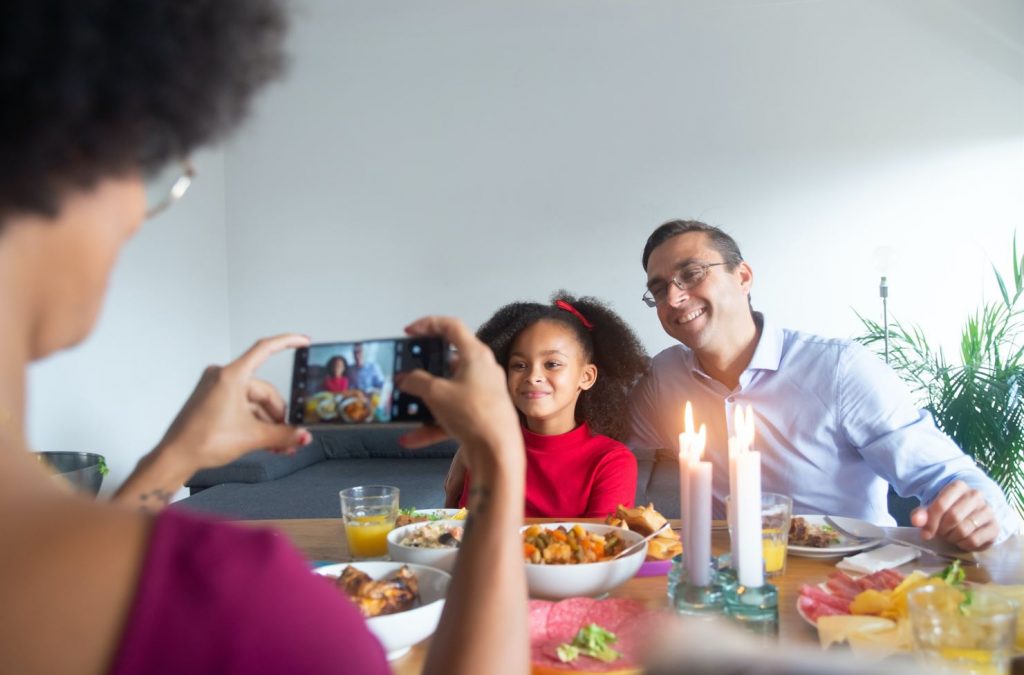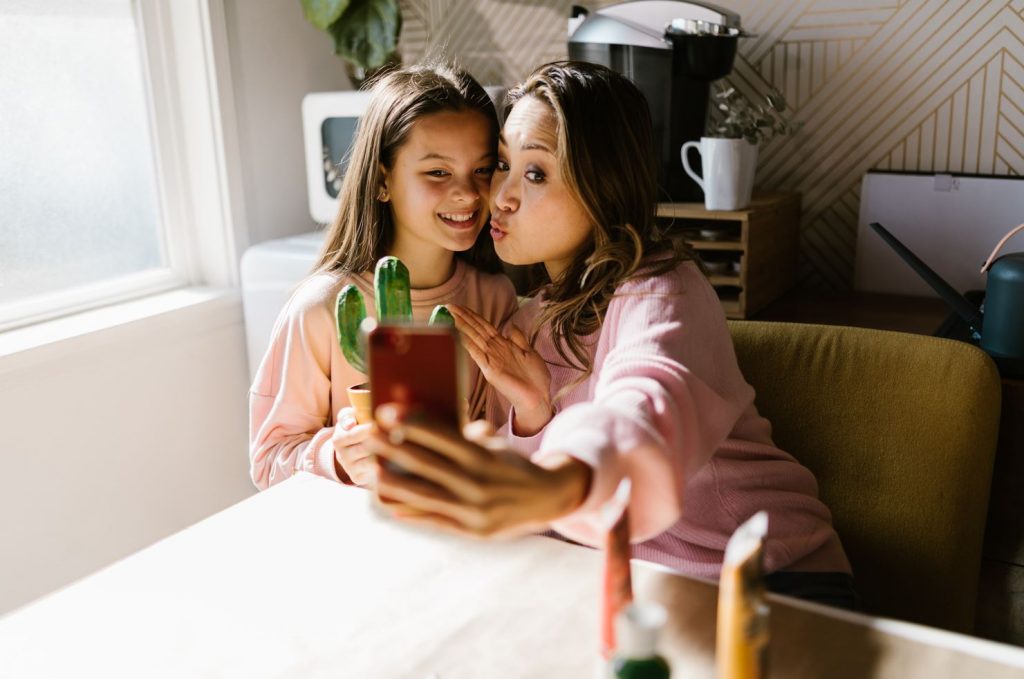Sharenting in Norway
By Clara Julia Reich, Live Standal Bøyum, and Kamilla Knutsen Steinnes
Children in Norway will have on average 1165 pictures of themselves on the Internet by the time they are 12 years old, according to UNICEF (2020). This shows that a lot of content is shared about children in Norway, often by their family members and friends. The practice of parents sharing information about their children is referred to as sharenting, a termderived from the words sharing and parenting. This practice is common both internationally and in Norway (Blum-Ross & Livingstone, 2017; Elvestad et al., 2021; Jorge et al., 2022; Otero, 2017). Analyzing sharenting from the perspective of both children and parents and bringing forth young people’s views is understudied (Lipu & Siibak, 2019; Verswijvel et al. 2019). Further, there is a lack of research in a Norwegian context (Bhroin et al., 2022).

Researching sharenting
The project “Sharenting – in the best interest of the child?” was conducted by Clara Julia Reich, Live Bøyum, Helene Fiane Teigen, and Kamilla Knutsen Steinnes, and the results build on the report they published (2023). The project aimed to fill the identified research gaps by conducting three focus groups and a workshop:
- ten children aged 9-12;
- seven adolescents aged 13-18;
- nine guardians aged 34-47 and
- a workshop where five parents brought along one child each to discuss sharenting.
Why do Norwegian parents share?
In the project, we found a variety of motivations behind why parents share. Parents mainly share to collect memories of valued moments, keep in touch with friends and families, show off their kids, and get feedback. Parents may also share to mark special occasions such as birthdays, Christmas, or the first day at school.

What are the issues?
Children and adolescents are particularly worried about any potential negative effects on their lives from sharenting. They wish to control their own digital identities and are concerned about sharenting leading to bullying. The views on what “good” content is differ between children and their parents which can lead to conflicts. Moreover, parents and their children also acknowledged that sharenting can lead to risks due to the possibility of it being misused in criminal activities such as deepfakes, sexual abuse, or kidnapping. Further, the participants were worried about potential abuse of the shared content in the future. However, parents pointed out that they do not want to harm their children and have good intentions when sharing.
How to improve sharenting?
Children and adolescents want to be asked for consent before parents share content about them. They would like to know what, with whom, and where content about them is shared. Further, children and adolescents would like their parents to ask for their consent from an early age and wish that their parents respect their boundaries when they disapprove of sharing. The young participants also suggested a need to increase their parents’ digital competence, for instance through school programs in Norway. Further, they wish to reduce the amount of sharing to a few selected special moments.
In collaboration with Tenk, a parent meeting guide for Norwegian schools was developed to inspire parents to be good role models in content sharing. The material is free to use and aims at inspiring dialogue and reflections between parents and children Foreldremøte om bildedeling på sosiale medier | Tenk (faktisk.no).

Authors’ bio
Clara Julia Reich, Live Standal Bøyum, and Kamilla Knutsen Steinnes are all Ph.D. candidates at Consumption Research Norway and have an interest in digitalization and everyday lives.
References
- Blum-Ross, A., & Livingstone, S. (2017). “Sharenting,” parent blogging, and the boundaries of the digital self. Popular Communication, 15(2), 110-125.
- Bhroin, N. N., Dinh, T., Thiel, K., Lampert, C., Staksrud, E. & Olafsson, K. (2022). The Privacy Paradox by Proxy: Considering Predictors of Sharenting. Media and communication (Lisboa), 10(1S2), 371-383. Doi: https://doi.org/10.17645/mac.v10i1.4858.
- Elvestad, E., Staksrud, E. & Ólafsson, K. (2021). Digitalt foreldreskap i Norge. Institutt for medier og kommunikasjon, UiO/Universitetet i Sørøst-Norge
- Lipu, M. and Siibak, A. (2019). ‘“Take it down!”: Estonian parents’ and preteens’ opinions and experiences with sharenting’, Media International Australia, 170(1), 1–11. Doi: https://doi.org/10.1177/1329878X1982836
- Elvestad, E., Staksrud, E. & Ólafsson, K. (2021). Digitalt foreldreskap i Norge. Institutt for medier og kommunikasjon, UiO/Universitetet i Sørøst-Norge.
- Jorge, A., Marôpo, L., Coelho, A. M., & Novello, L. (2022). Mummy influencers and professional sharenting. European Journal of Cultural Studies, 25(1), 166–182.Doi: https://doi.org/10.1177/13675494211004593
- Otero, P. (2017). Sharenting… should children’s lives be disclosed on social media. Arch Argent Pediatr, 115(5), 412-413.
- Reich, C. J.; Bøyum, L.; Fiane Teigen, H.; Steinnes, K. K. (2023). «Sharenting» – til barnets beste? Personvern og kritisk medieforståelse knyttet til foreldres deling av egne barn i sosiale medier. SIFO rapport 9- 2023. «Sharenting»- til barnets beste? Personvern og kritisk medieforståelse knyttet til foreldres deling av egne barn i sosiale medier (oslomet.no)
- UNICEF (2020). 6 råd om deling av bilder av barn. Hentet fra: https://www.unicef.no/norge/oppvekst/eksponering-av-barn-i-sosiale-medier/rad-tilforeldre.
- Verswijvel, K., Walrave, M., Hardies, K., & Heirman, W. (2019). Sharenting, is it a good or a bad thing? Understanding how adolescents think and feel about sharenting on social network sites. Children and Youth Services Review, 104, 104401. Doi: https://doi.org/10.1016/j.childyouth.2019.104401